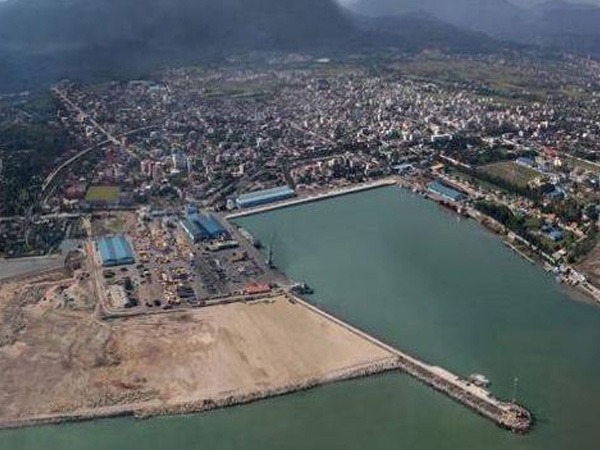
New Delhi: The International North-South Transport Corridor (INSTC) is a multi-modal network that includes sea, rail, and road routes. It offers a cost-effective and quicker option to connect various parts of Europe, Russia, Central Asia, the Gulf region, and the Indian Ocean region.
As a multi-stakeholder project, the INSTC is a genuine multilateral integration initiative. Its goal is to link different regions and promote the intra-regional development of diverse, dynamic, and resource-rich economies.
The corridor holds strategic and economic importance for Central Asian Republics (CARs) as it allows the region to connect with other parts of the world and help export its critical energy resources. Moreover, the INSTC route is far safer and more reliant than Pakistan's insurgency-hit and Chinese-run Gwadar Port. Most importantly, the INSTC corridor via Iran and India will also give CARs access to big Southeast Asian markets.
India, Iran and Russia signed the INSTC agreement in 2000, which was then ratified and came into effect in 2002.India has played a major role in organising meetings with countries including Iran, Russia, Central Asian countries, and Bulgaria to promote the project and its implementation.
Reflecting this opportunity, the INSTC’s membership expanded over the years to include the Central Asian states of Kazakhstan, Kyrgyzstan and Tajikistan. Further, in 2012, Uzbekistan and Turkmenistan agreed to extend support to member countries to complete the missing links along the corridor. Last week, Uzbekistan and Turkmenistan expressed interest in joining INSTC to trade in the Indian Ocean region via Chahbahar Port in Iran.
Strategically, the Central Asian Republics (CARs) are located at the center of Eurasia and have been a pivotal point for geographical changes within the “world island”. Furthermore, the abundant hydrocarbon resources in Kazakhstan and Turkmenistan make them crucial areas of influence for global powers. India is also seeking to expand its economic ties with the countries in the region.
For years, Pakistan refused the land connectivity between India and Central Asia. Additionally, multilateral projects like Turkmenistan-Afghanistan-Pakistan-India (TAPI) have been on hold since 2006 because of Pakistan’s reluctance to allow India to receive energy resources from Central Asia. The INSTC corridor avoids such deliberate roadblocks between India and CARs as it will bypass Pakistan.
According to the Federation of Freight Forwarders Associations, the route would be 30 per cent cheaper and 40 per cent shorter than the current traditional Suez Canal route, which takes 45-60 days, whereas the INSTC takes 25-30 days.
This shorter route opens up significant markets in India, Russia, Central Asian countries, as well as other parts of Asia and Europe. Energy-rich Central Asian countries are expected to play a crucial role in the emerging Eurasian corridor due to their extensive geography and resources. Since 2015, Central Asian countries have expressed interest in connecting with India via the Chabahar Port in Iran and the INSTC.
An example of this is India’s admission to the Ashgabat Agreement, which allows India to use the existing land connectivity in Central Asia and Eurasia, such as the Kazakhstan-Turkmenistan-Iran (KTI) railway line. In return, New Delhi has extended a line of credit of US$1 billion to the region for infrastructure development, including projects like Tajikistan’s Dushanbe-Chortut highway.
In July 2022, the INSTC commenced operations through its eastern route, which spans from Russia through Kazakhstan, Turkmenistan, and Iran to India. The inaugural shipment, comprising 39 containers, was transported via rail to the Bandar Abbas port in southern Iran and then by sea to India’s Nhava Sheva Port.
The corridor’s Eastern route runs along the Caspian Sea’s eastern coast through Kazakhstan and Turkmenistan and is approximately 6,100 km. The INSTC project has been progressing cautiously and is slowly achieving its intended goals. However, its importance has increased significantly, especially after the COVID-19 pandemic. This is due to the urgent need for alternative supply chains to reduce reliance on China.
Additionally, concerns about potential maritime blockades in a region with many flashpoints, such as the recent increased tensions in the Taiwan Strait, have emphasised the need to explore and invest in new transportation routes. By 2030, INSTC will have the capacity to handle between 14.6 and 24.7 million tonnes of freight annually. This would account for over 70 per cent of all container traffic between Eurasia, Central Asia, the Gulf region, and South Asia.
Moreover, the INSTC could be used as a trade balancer or leverage amidst the Belt and Road Initiative’s (BRI) increasing footprint in Central Asia and Europe. Notably, many countries with BRI projects have become victims of China’s ‘debt-trap’ economic strategy. As a result, BRI is facing a survival battle amidst increasing negativity and doubts regarding China’s real intention behind it.
The China-Pakistan Economic Corridor (CPEC), a ‘flagship’ project of BRI, is facing a massive failure as Pakistan owes two-thirds of its foreign debts to China. Several projects under phase one of CPEC are incomplete despite the forced announcement of the second phase of the multi-billion project in June.
The Gwadar Port in Pakistan has not experienced a significant increase in ship traffic since the formal commencement of CPEC in 2015. The port and its surrounding areas are prone to regular shutdowns and insurgent attacks due to opposition to the presence of Chinese workers and security personnel in the region. As a result, Pakistan is actively seeking neighbouring countries to utilise the Gwadar Port to support its financial sustainability and protect CPEC from potential failure.
Additionally, Pakistan faces default due to rising inflation, decreasing foreign exchange reserves, and increasing foreign debts. Many foreign companies have either closed their businesses in Pakistan or significantly reduced their investments. These are clear signs that the long-term prospects of Pakistan’s economy, security, and political stability appear bleak. Therefore, Central Asian countries would economically benefit from using the INSTC corridor to expand their export markets in the India Ocean and further east to ASEAN countries.